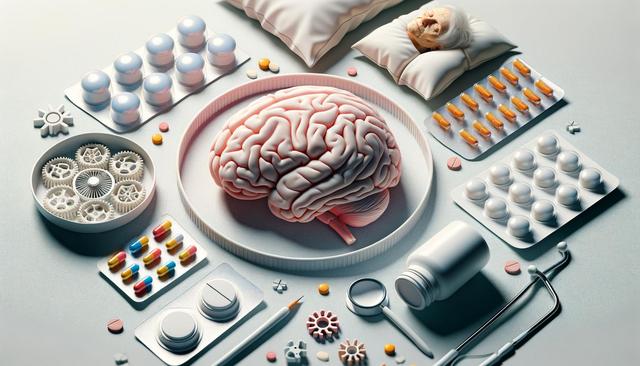Understanding the Role of Breast Implants in Cancer Recovery
After undergoing treatment for breast cancer, many individuals consider breast implants as part of their physical and emotional healing. Reconstruction can be a vital step toward restoring a sense of wholeness. While choosing implant-based reconstruction is a personal decision, it’s important to understand how reconstruction supports physical and emotional recovery. Implants can help redefine body image, support self-esteem, and re-establish a sense of normalcy after a mastectomy.
This process is not merely cosmetic; it often plays a critical role in helping individuals emotionally navigate life post-treatment. Whether one is considering immediate reconstruction during mastectomy or delaying the procedure until after treatment, both options offer varying benefits. Decisions around reconstruction should be guided by discussions with a medical team, including oncologists and plastic surgeons, who can help develop personalized breast restoration plans tailored to each individual’s needs and health status.
Top 3 Things to Know About Breast Implants After Cancer
Making an informed decision about breast implants involves understanding several key factors. Here are the top 3 things to know about breast implants after cancer:
- Timing Matters: Implant reconstruction can be immediate or delayed. Immediate reconstruction occurs during the same surgery as the mastectomy, while delayed reconstruction happens after recovery from the cancer treatment.
- Implant Types and Materials: There are different implant materials, such as saline or silicone. Each option has benefits and considerations, which should be reviewed with a qualified surgeon.
- Possible Additional Procedures: Some individuals may require more than one surgery to achieve the desired outcome. These procedures might include adjustments or refinements to improve symmetry and comfort.
Understanding these basics helps manage expectations and encourages proactive involvement in the decision-making process, leading to more satisfying outcomes.
Exploring Post-Mastectomy Reconstruction Options
There are several post-mastectomy reconstruction options available, and implants are just one path among many. Patients may also consider autologous tissue reconstruction, which uses tissue from another part of the body. However, implant-based reconstruction remains a widely chosen option due to its shorter surgery time and typically quicker recovery.
Some of the implant-based options include:
- Direct-to-implant reconstruction: Performed at the time of mastectomy, eliminating the need for a tissue expander.
- Two-stage reconstruction: Involves placing a temporary tissue expander first, followed by the permanent implant.
The choice between these options depends on factors like body type, cancer treatment plan, and overall health. These considerations form the foundation of personalized breast restoration plans that aim to align medical safety with aesthetic goals.
What to Expect During Implant Surgery
For those considering implants, understanding what to expect during implant surgery is essential. The procedure typically involves general anesthesia and may last a few hours, depending on the complexity and whether additional procedures are being performed. Recovery time can vary, but most individuals return to normal activities within several weeks.
Post-operative care is a vital component of healing. Patients often experience swelling, bruising, and discomfort, which can be managed with prescribed medications. Follow-up appointments will help monitor healing and address any complications early. It’s also important to know that implant reconstruction may involve future surgeries for maintenance or aesthetic adjustment.
Having realistic expectations and a clear understanding of the process can significantly reduce anxiety and support a smoother recovery. Discussing advanced implant techniques with a surgeon can also help individuals choose options that align closely with their personal goals.
Advancements in Implant Technology and Techniques
In recent years, advanced implant techniques have improved both the safety and aesthetic outcomes of breast reconstruction after cancer. Innovations in implant materials, such as cohesive gel implants, offer more natural-looking results and improved durability. Additionally, surgical techniques that preserve skin and nipple structures have enhanced the overall appearance and feel of reconstructed breasts.
Some notable advancements include:
- Pre-pectoral placement: Implants are placed above the chest muscle, reducing discomfort and recovery time.
- 3D imaging and planning: Helps surgeons create personalized breast restoration plans by visualizing results before surgery.
- Improved implant shapes and textures: Designed to mimic natural breast contours and reduce the risk of complications.
These advancements mean that more individuals have access to reconstruction options that better meet their needs and preferences. Speaking with a surgeon experienced in these techniques can provide deeper insight into the range of possibilities available during recovery.
Conclusion: Empowering Recovery Through Knowledge
Choosing breast implants after cancer is a deeply personal decision influenced by emotional, physical, and medical factors. With a growing range of post-mastectomy reconstruction options and advanced implant techniques, individuals have more control than ever in shaping their recovery journey. Understanding the top 3 things to know about breast implants after cancer, being informed about what to expect during implant surgery, and engaging in discussions around personalized breast restoration plans can help support both healing and self-confidence. Ultimately, reconstructive surgery is not just about appearance—it’s a step toward reclaiming identity and embracing life after cancer with renewed strength.




Leave a Reply